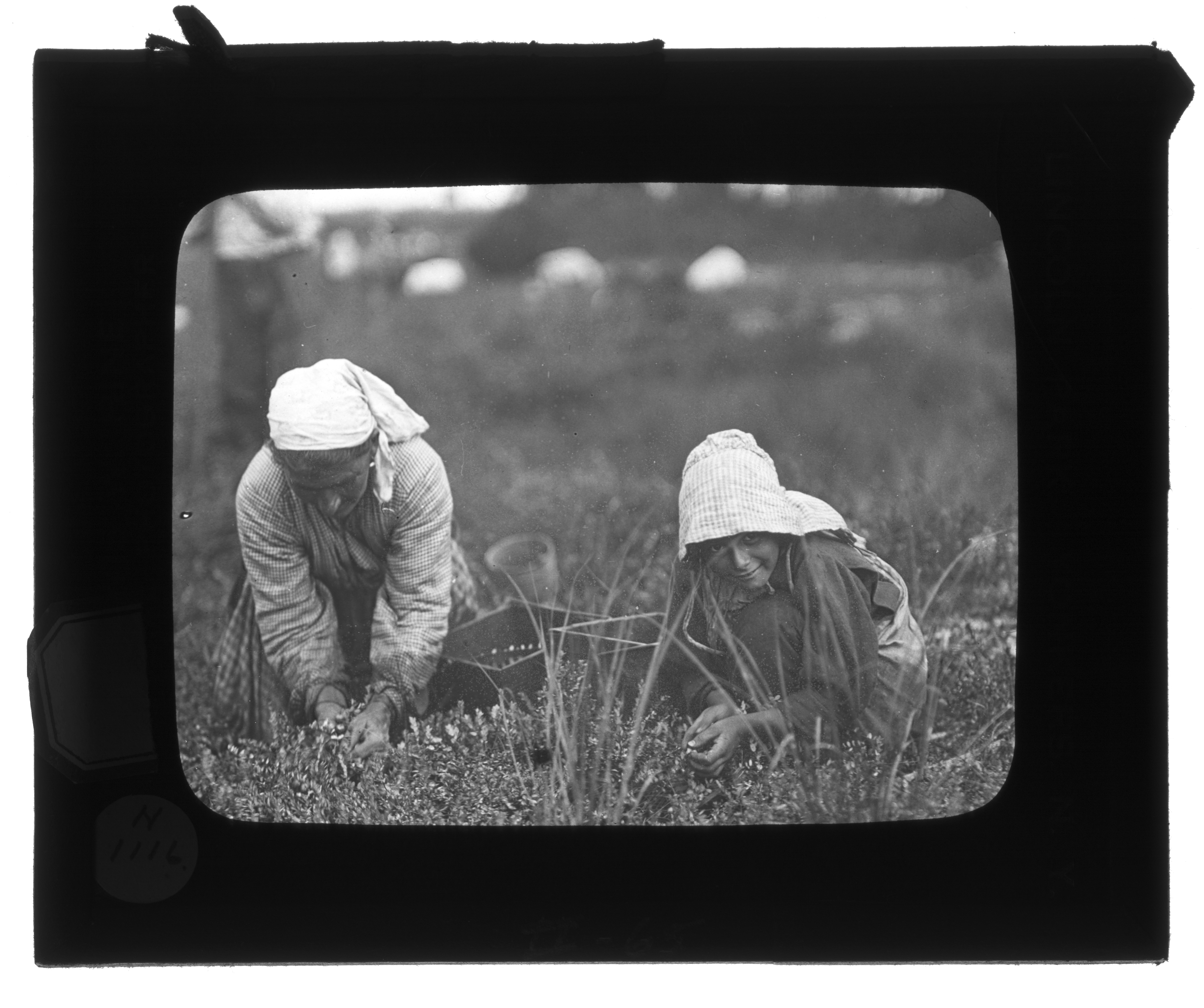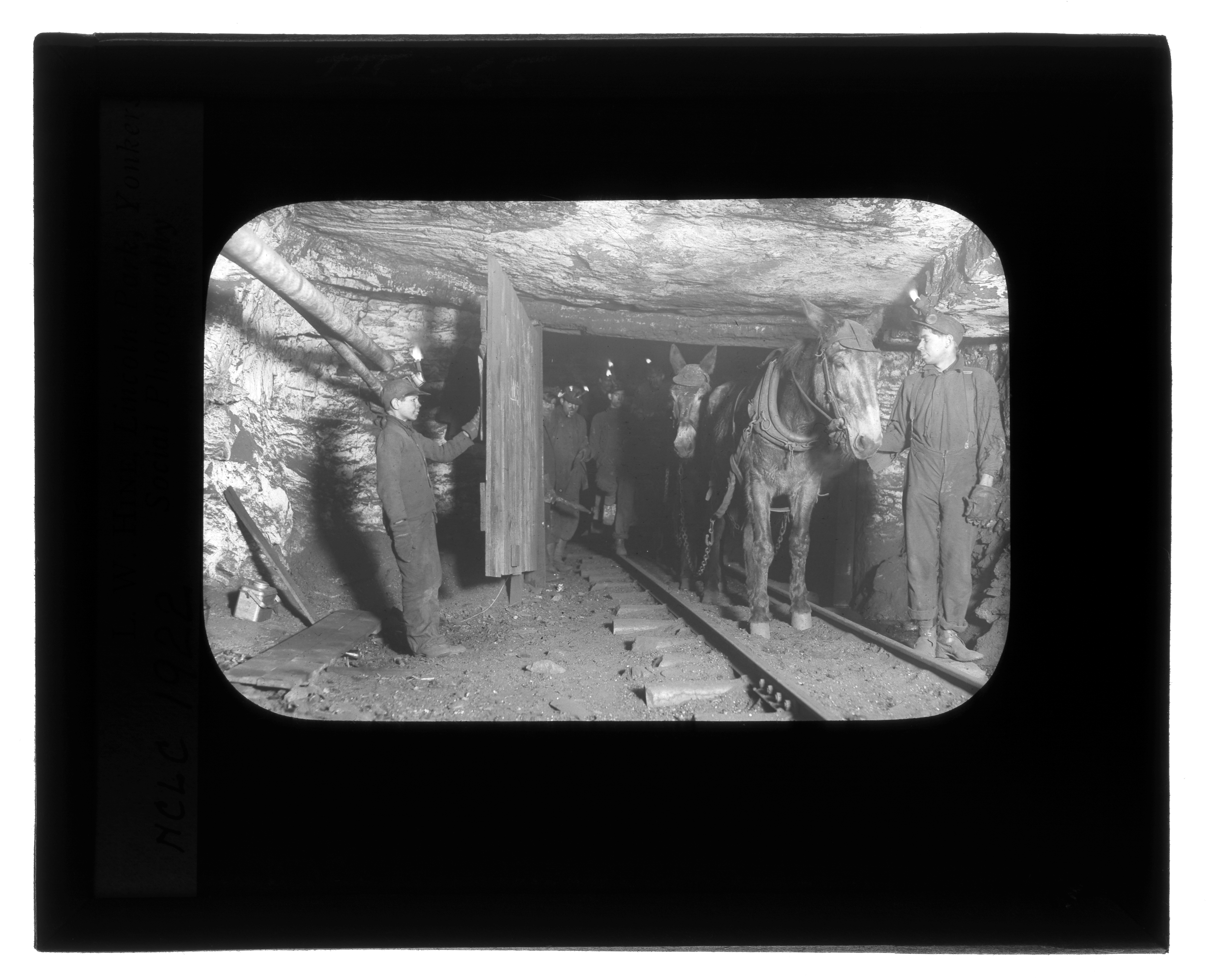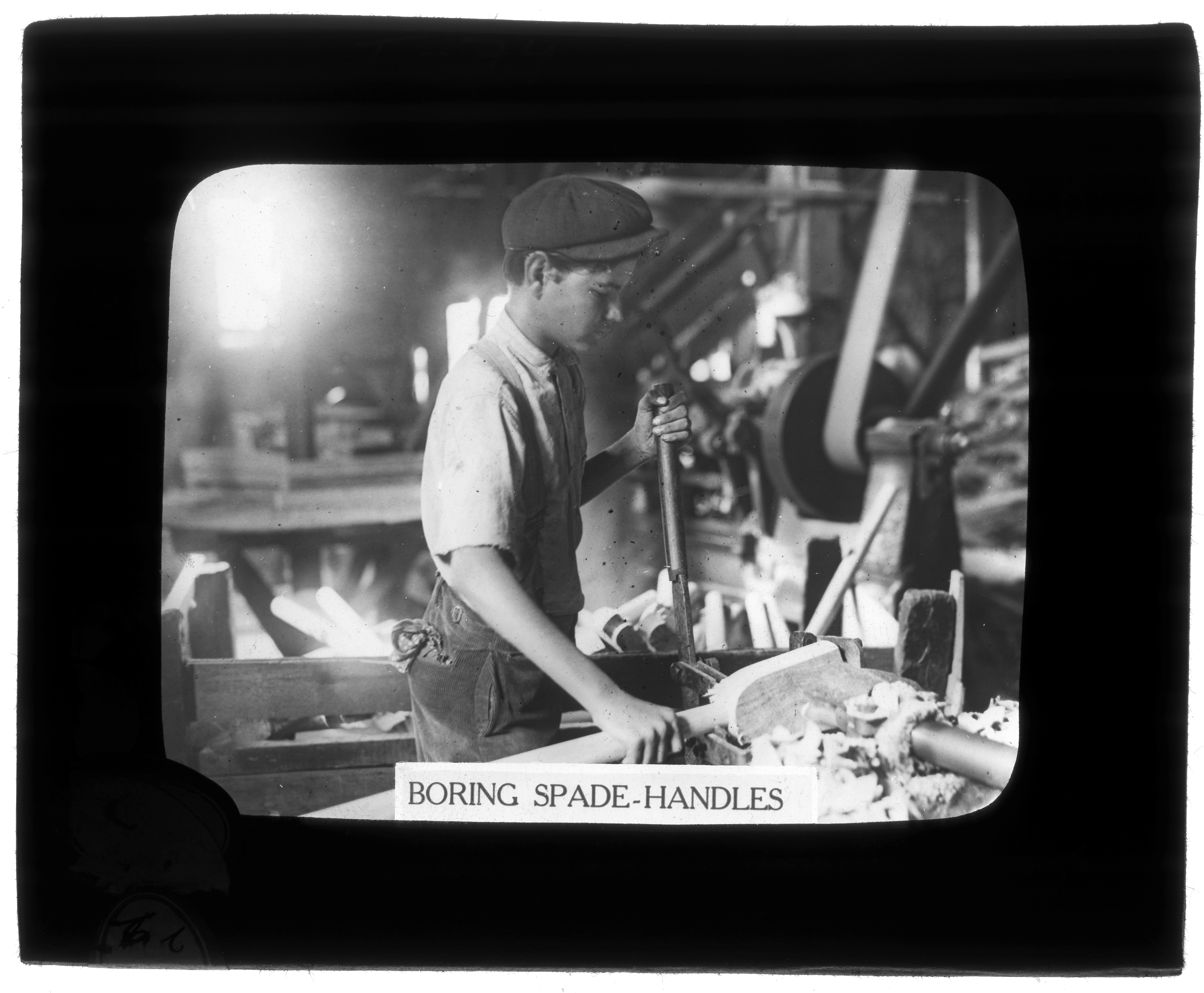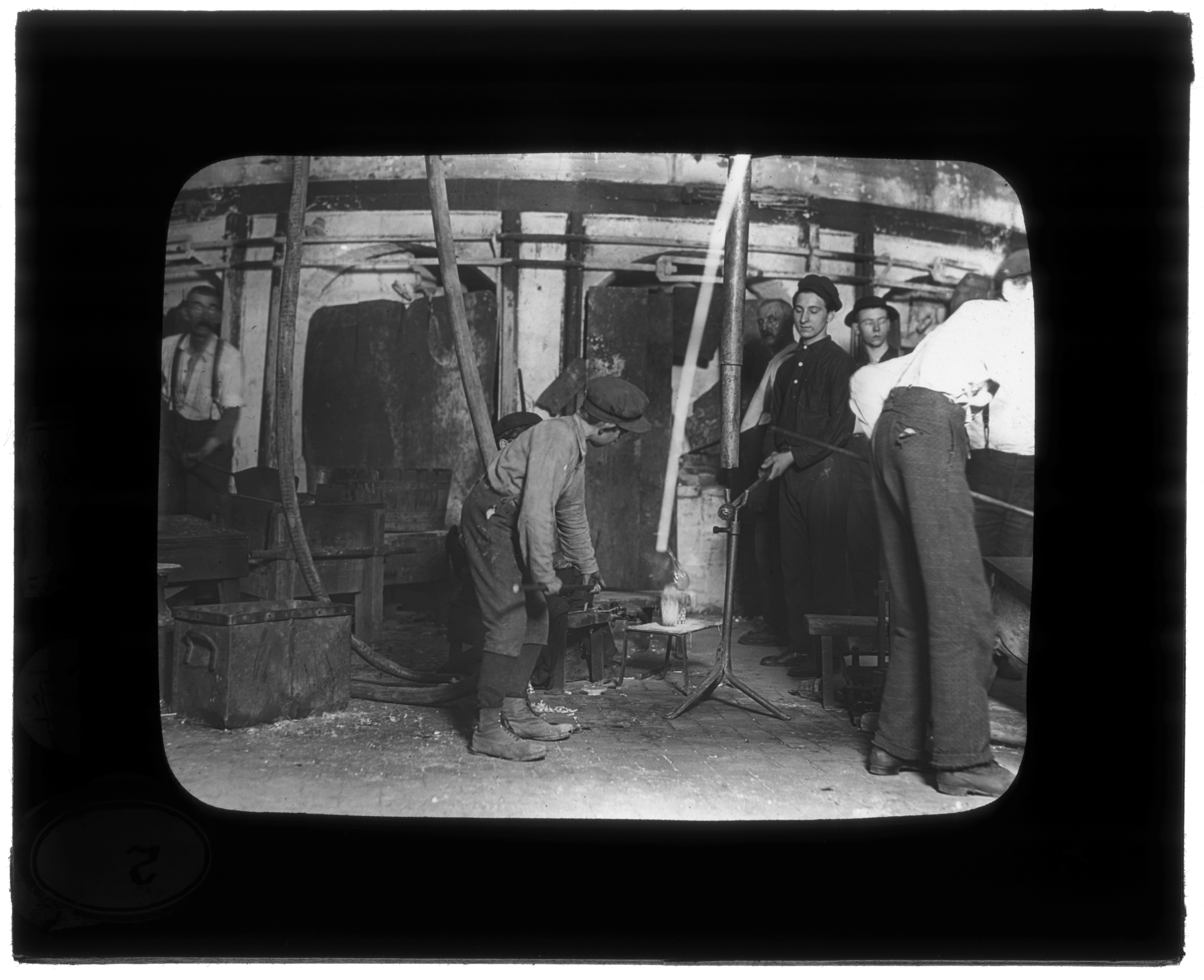UMBC Special Collections: The National Child Labor Committee Lantern Slides
A new digital collection, National Child Labor Committee lantern slides, brings online the images that were used by the NCLC in slide shows that they disseminated to bring awareness to the plight of child laborers. This collection, composed of over 240 glass lantern slides, are part of UMBC's Special Collections and complement the world renown Lewis Hine collection, which is also made available online.
“That childhood is endowed with certain inherent and inalienable rights, among which are freedom from toil for daily bread; the right to play and to dream; the right to the normal sleep of the night season; the right to an education, that we may have equality of opportunity for developing all that there is in us of mind and heart.”
-- A. J. McKelway, Southern Secretary of the National Child Labor Committee (1913)
The International Labour Organisation defines child labor as “any work that deprives children of their childhood, their potential and their dignity, and that is harmful to physical and mental development”. In the United States, children have been forced to work in mines and industrial factories, where their health and safety were jeopardized. While it may seem unthinkable to us now, the expanding economy of the 19th and 20th centuries demanded cheap labor. It wasn’t until the early 1900s that things began to change.

The National Child Labor Committee (NCLC) was established in 1904 with the intent to promote the well-being of children and young adults in the workforce. The NCLC opposed the employment of underage workers in dangerous jobs with unhealthy conditions, particularly in mines and factories or completing manual labor, which often led to health concerns such as tuberculosis and broken bones. Children became unhealthy or poor adults, because the cycle of work and sleep left little or no time for education or play.

In order to bring their concerns to the public’s attention, the NCLC made extensive use of photography. They hired photographers to document child labor, including the working conditions and the children themselves. Exhibitions of these photographs circulated around the United States, dragging the seedy underworld of child labor into the spotlight.

One
of the photographers hired by the NCLC was Lewis Hine, a self-styled social
photographer who traveled around the country documenting working children.
He used his craft to expose detrimental social conditions and to spur
change. These photographs, and those of other NCLC photographers, also brought
about new ideas concerning childhood, including the belief that it is something
to be cherished and that play should be encouraged. A collection of NCLC
photographs printed on glass lantern slides, can be viewed at UMBC’s Special
Collections, including many by Lewis Hine.

With the aid of these photographs, the NCLC was able to sway public opinion on child labor. Children under the age of sixteen were prohibited from working dangerous jobs, and children under fourteen we prohibited from working at all. Work permits providing proof of age became mandatory. By the 1930s, child labor finally began to disappear altogether with the invention of machines that could replace small hands in the workplace.

Special Collections is open to anyone with a photo ID, M-W 1-4, Th 1-8, and F 1-4. Appointments available Monday - Friday from 9:00am - 4:30pm. Contact: 410.455.2353 | speccoll@umbc.edu
Intercession, Summer Term, and Winter Term open by appointment only.
This post was written by Rebecca Borland, who as an intern in Special Collections in spring 2015 scanned the glass lantern slides, created preliminary metadata, and produced contextual and promotional information for the collection. Thanks, Becca!
Works Cited
"Child Labour." United Nations. United Nations. Web. 16 Apr. 2015. <http://www.un.org/en/globalissues/briefingpapers/childlabour/>.
Curtis, Verna Posever, and Stanley Mallach. Photography and Reform: Lewis Hine & the National Child Labor Committee. Milwaukee: Milwaukee Art Museum, 1984. Print.
McKelway, Alexander. "Declaration of Dependence." Declaration of Dependence. Web. 14 Apr. 2015. <http://www.appstate.edu/~hindmanhd/declare.htm>.
"The National Child Labor Committee." National Child Labor. National Child Labor Committee. Web. 16 Apr. 2015. <http://www.nationalchildlabor.org/>.
"What Is Child Labour." International Labour Organization. International Labour Organization. Web. 14 Apr. 2015. <http://www.ilo.org/ipec/facts/lang--en/index.htm>.





